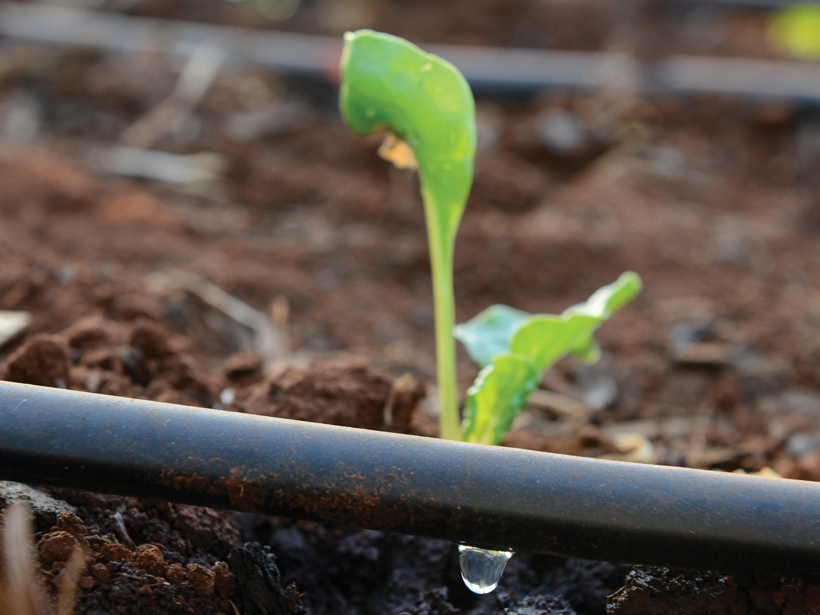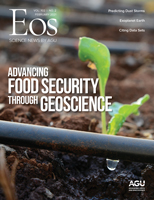Food insecurity is a growing threat in many places around the world. This situation is exacerbated by two events that many geoscientists are tasked to study: natural hazards and our changing climate. In this issue of Eos, we look at how geoscientists are using their research to help create resilient communities around the world that can always be sure of food in their pantries.
“Food security is an issue that resonates with all of us—it’s a grand challenge across regions and spatial and temporal scales,” said Ben Zaitchik of Johns Hopkins University in Baltimore, Md. “We want to highlight the ways in which geoscientists can contribute to meeting this challenge.” Zaitchik is the Eos science adviser from AGU’s GeoHealth section who helped us develop this issue along with Merritt Turetsky, our Biogeosciences science adviser at the University of Colorado Boulder.
“As the geosciences start to grapple deeply with issues of environmental and social justice, there is no better exemplar than the food we eat and the water we drink,” said Turetsky. “Crop production, labor markets, water rights across the urban–agricultural divide: These are all issues that society needs to face and in which the geosciences have a strong role to play.”
In “Sowing Seeds of Food Security in Africa,” Catherine Nakalembe and colleagues discuss their work at NASA Harvest Africa and how they strive to improves the lives of smallholder farmers by using satellite technology to harness data and guide agricultural decision-making. Nakalembe, the program director, was recently named a 2020 Africa Food Prize Laureate for her service in this area, and we are honored to feature her team’s work in this issue.
“The diversity of organizations involved in geoscience applications to food security in the developing world [is] energizing.”
We dive deeper into the opportunities for satellite data to contribute to these efforts with M. E. Brown, a research professor with the University of Maryland. “I found the diversity of organizations involved in geoscience applications to food security in the developing world to be energizing,” said Zaitchik of Brown’s analysis of the current state of food security initiatives. “The fact that international research partnerships are working directly with national ministries in food-insecure regions, and that small business start-ups in developing countries are working with advanced geoscience techniques, is really quite exciting.”
Finally, we take a broader look at food security in “Climate Change Uproots Global Agriculture.” A warming world is bringing inexorable changes to ecosystems. In many places, a crop that thrived just a few decades ago no longer survives in the climate that exists there today. Geoscientists play a crucial role in understanding what the future is going to look like and how farmers can adapt.
“Geospatial analyses, development of new geotechnical skills, and improved understanding of ecohydrology and biogeochemistry will become even more important for what we eat and how we eat in the future,” added Turetsky. “Food and water distributions will increasingly become a STEM issue as well as an environmental and social justice issue.”
We thank all of the geoscientists who are contributing solutions to the serious challenges threatening food security. We will continue to follow your work and report on it in the pages of Eos.
—Heather Goss (@heathermg), Editor in Chief
Citation:
Goss, H. (2021), Our place in the food security chain, Eos, 102, https://doi.org/10.1029/2021EO153751. Published on 25 January 2021.
Text © 2021. AGU. CC BY-NC-ND 3.0
Except where otherwise noted, images are subject to copyright. Any reuse without express permission from the copyright owner is prohibited.
Text © 2021. AGU. CC BY-NC-ND 3.0
Except where otherwise noted, images are subject to copyright. Any reuse without express permission from the copyright owner is prohibited.


